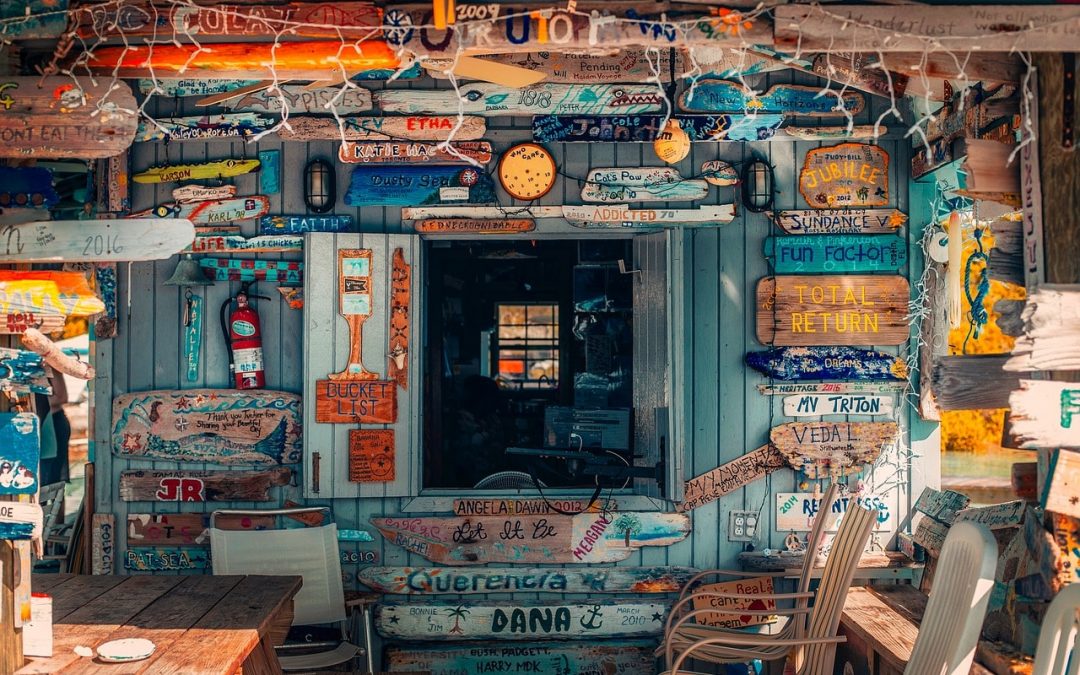Restaurants open and close for many reasons. A restaurant can be opened by a businessman or women that can’t boil an egg, but be incredibly successful. A restaurant can also be opened by the greatest chef in the world and fail. Your restaurant is more than a business, it’s more than the food: it’s a brand. Customers come for the food AND the experience. Whether it’s a single location or a huge enterprise, a successful restaurant has branding.
What is Restaurant Branding?
Restaurant branding is your unique angle to your customers. Why should they choose you over a competitor? Your branding helps them know what to expect. Each decision made becomes a puzzle piece, with the finished puzzle creating the brand. The branding becomes the menu design, the lighting used, the server’s outfits, the drinks, the tables, the chairs, the social media feeds,and the music played. All of these pieces create the brand.
How to Build a Brand
In order to create a restaurant brand, you have to think about what makes your restaurant, cafe, bar, bakery, etc. unique. Look at it from the customer’s perspective. Branding starts long before the door is opened. Think about the messaging your customers are seeing when they drive by, the signage, the advertisements, the social media posts. These are their first impressions of who you are as a brand.
Today people expect a lot out of a business, particularly restaurants. Customers are looking for emotional attachment, they want to feel a connection towards your business, understanding its personality and using it as a reflection of who they are.
Know Who You Are
Imagine your restaurant is a person and ask yourself these questions:
- What do they look like?
- How do they walk and how do they talk?
- What are their interests?
- Who are they as a person?
- How do they walk?
- What are their favorite foods?
- What do they do in their spare time?
Each decision you make should reflect this personality, as it will attract your ideal audience. When you add specials, decor, or even employees that clash with your brand, you’re hurting your business.
Know Your Angle
Successful restaurants have a “sell.” They have their angles and know who they are. Customers know what to expect and have certain standards towards the particular restaurant. The restaurant fulfills a specific need in the marketplace. The restaurant could be similar to a competitor but has some distinct difference. There is a reason someone would choose one over the other.
If you go to buy a bottled water, you may be overwhelmed by the choices you have. Each product is actually very similar, but the branding is very different. When you choose Fiji over Dasani, you’re choosing water over water. It’s the same product, but the brand is very different. You’re buying the brand.
Restaurant Example
A “local” restaurant that focuses on using locally sourced ingredients is going to want to focus on their angle: local. It’s not just about the food, this “local” theme should spread to every aspect of the restaurant to create a strong brand message. You can use the theme to help every piece of the puzzle be “on brand.” If a piece clashes, it chips away at the authenticity. It goes down to the bathroom decor, the straws, the napkins, the menus, coupons, specials, each of these aspects flows around local sourcing. Each piece doesn’t have to actually be locally sourced, just complementing the theme.
What Can You Do?
Tell a Story
Does your restaurant have a unique backstory? Tell your customers! It will help them gain a better sense of who you are. Let them know if you use your grandmother’s recipe or if a dish was nspired by a trip to Japan in college. Your story helps personify your restaurant, creating its own image and entity. Your restaurant is more than the food and infrastructure, it’s a feeling and an experience.
Attract the Foodies
What makes your food special? Is it the spices, the sourcing, the quality? How did you come up with a recipe? Your food and drinks are the core product of your restaurant, it’s important that the brand fits.
You want to offer a simple pasta with a plain red tomato sauce.You can put it on the menu as:
- Spaghetti
- Pasta al Pomodoro
- Spaghetti Monster
- Pastabilities
- Nonna Rosa’s Pasta
Each one of these names tells a different story and offers different branding. The dishes are all the same, but the branding behind them is different. The pasta will have a different feel depending on presentation to the customer. Does it come out in fancy china, an art deco square bowl, something mismatched, or sustainable bamboo? Even the smallest choices are part of your brand image and can help or hurt it.
Create the Atmosphere
Pretend you’re a customer walking through the doors. What do you see? Observe the music, the sounds of the employees, and the smells of the kitchen. Listen to the music, be mindful of how it would make you feel. A nicely dressed host can bring you to a neatly decorated table, or maybe you seat yourself at a reclaimed wood communal table and grab a paper DIY menu to circle what you want to order.
An enterprise restaurant has the opportunity to choose localization or standardization. Each location can be unique, offering different menu items and decor, or no matter what location you go to, it is exactly the same. Both angles have their own advantages and disadvantages.
Brand Awareness
Social Media & SWAG & Events
Spread the word about your restaurant, bar, cafe, bakery, but make sure all of your messages are on-brand. You social media posts should reflect your brand, using the same tone as your restaurant would if it were a person. Know your audience and post to them.
Hats, t-shirts, koozies, magnets, stickers, etc. are great ways to help spread the word. If you have a great logo, paint the town with it. SWAG is great for building relationships with customers, giving them a reason to think about you.
Your restaurant is a business and it is a brand. The food and customer experience work together to give your customers a view of who your restaurant is. Make sure your customers know what to expect each visit, know what you are offering. Your brand is what sets you apart from your competition. Do you have the best burger in town? Do you brew your own beer? All of your decisions work to build this image which will attract and build a relationship with your customers.

